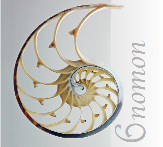



 NEXT
NEXT
 BACK
BACK
 Forum
Forum


Philosophical musings on Quanta & Qualia; Materialism & Spiritualism; Science & Religion; Pragmatism & Idealism, etc.




Post 107. March 08, 2020 continued . . .
The God Problem
The No-
To be perfectly clear at the outset, Bloom confesses in Chapter One, “There is no God” [as revealed by traditions & scriptures]. He became certain of that negation just in time to nix his own Bar Mitzvah. But, he was also pretty certain of something else by then, the creativity of the universe, as revealed by Science. So for the rest of his life, he struggled with one question : “how does a Godless cosmos pull off the tricks that every genesis myth tries to grasp?” In other words, “how does the cosmos create?” The rest of the book is a desultory excursion through the history of Science and Math, via Five Axioms, Five Heresies, Six Quarks, eight Ugly Ducklings, and a plethora of Semantic Entanglements. Hence, this book is his roundabout way of explaining Creativity without a Creator — explaining Fecundity without an Inseminator. I give him an “A” for effort, but the immaculate conception of a living universe stretches credulity. And Bloom is acutely aware of the no-
After a brief review of the well-
He asserts that evolution is simply the reiteration of a few simple rules, which he calls “axioms” : self-
Post 107 continued . . . click Next
Creativity
without
Creator?
Laws of Cosmic Creativity
Axioms : fundamental truths; natural laws
Archetypes : ideal Forms, concept of a thing
Relationships : mathe-
Emergence : coming into being (implicit to explicit)
Iteration : repetition of same action over & over
Transformation : change from one form to another, or one context to another; phase change
Positive & Negative : attraction & rejection; recruitment strategies
Differentiation & Integration : division & addition; parts & wholes
2. Natural Laws :
Bloom’s notion that mathematical patterns inherent in the universe can explain how Evolution has constructed the known world from an initial seed. But now he needs to explain the seed. Darwin’s theory explains the emergence of new species from previous species, but made no attempt to describe how living organisms emerged from non-
That’s similar to my own answer to the God Problem. Except that I go one step further back. My unproven assumption is that Creative Potential is eternal. G*D is the ultimate Axiom : the Lawmaker, the Mathmaker, the Geometer, the Enformer.

The God Problem
How a Godless Cosmos Creates
Howard Bloom
Psychology; Sociology; Political Science
